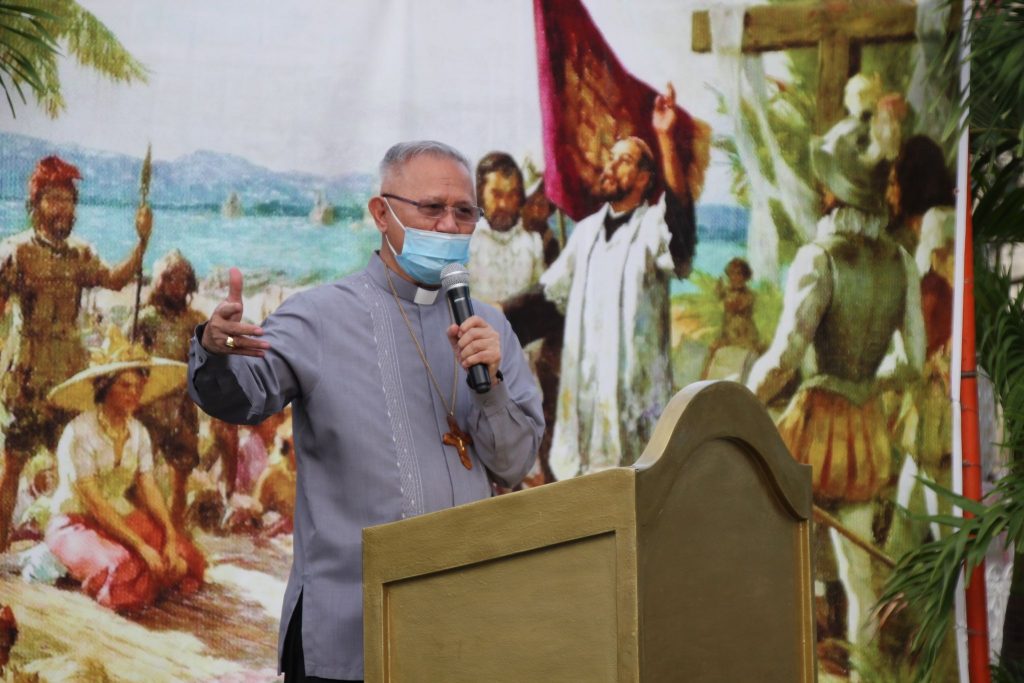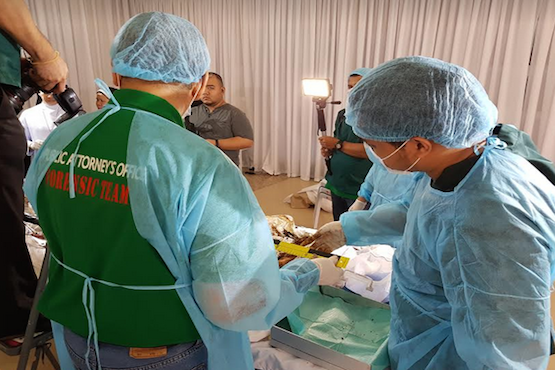
Archbishop Jose Palma of Cebu called on the faithful to pray for the canonization of Servant of God Archbishop Teofilo Camomot, who could be the country’s third saint.
“[The] prayer is to be recited before the start of every celebration of the Holy Mass immediately after the reading of the Mass intentions,” said Archbishop Palma in a circular dated June 29.
“As we continue with our different jubilees celebrating our 500th Year of Christianity, we also fervently pray for the approval of our “positio” on the cause of Archbishop Camomot’s canonization,” he said.
In July last year, the Vatican’s Congregation for the Causes of Saints has approved the “positio” for the cause of sainthood of the late archbishop of Cebu.
A “positio,” or “positio super virtutibus,” is a document or collection of documents used in the process by which a person is declared “Venerable” in the Catholic Church.
It is the second of the four steps on the path to the canonization of a person as a saint. It collects the evidence obtained by an inquiry into a candidate’s heroic virtues.
After the “positio” is approved, a committee of expert historians and theologians may then make a recommendation to the pope for the candidate to be declared “Venerable.”
A miracle is needed for the late Cebuano archbishop to be declared Blessed and another miracle for him to be declared a saint of the Church.
On Nov. 9, 2017, the Vatican approved the diocesan process for the cause of sainthood of Archbishop Camomot that started in October 2015.

Archbishop Camomot was born in Cogon, Carcar, Cebu, on March 3, 1914, to Luis and Angela Bastida. He was the third child of eight children.
He underwent seminary formation at the Seminario Mayor de San Carlos in Cebu City and was ordained a priest on Dec. 15, 1940.
After ordination, he was assigned in different parishes until he was appointed parish priest of Sta. Teresa Parish in Talisay, Cebu, in 1943.
According to accounts, he lived a simple and austere life. Before celebrating Mass he would visit sick parishioners and attend to their needs.
After serving the parish for 12 years, he was named titular bishop of Marcianopolis and auxiliary bishop of Jaro, Iloilo, on March 26, 1955.
In 1959, he became co-adjutor archbishop of Cagayan de Oro and appointed parish priest of Sta. Rita, Balingasag, Misamis Oriental province.
He founded the Carmelite Tertiaries of the Blessed Eucharist, today known as the Daughters of Saint Teresa, in Misamis Oriental.

Archbishop Camomot attended the Second Vatican Council from 1962 through 1965.
He resigned as co-adjutor archbishop on June 16, 1968, due to a kidney problem and went back to Cebu in 1970.
He became auxiliary bishop of Cardinal Julio Rosales who appointed him parish priest of El Pardo in Cebu City.
On Feb. 19, 1976, he was named parish priest of Carcar, Cebu, his hometown while also serving the archdiocese in other areas of responsibilities.
He died on his way back to his parish in a car crash in San Fernando, Cebu, on Sept. 27, 1988.
The remains of Archbishop Camomot were exhumed on Jan. 3, 2018, for forensic examination as part of the process for sainthood.
The forensic team that examined the skeletal remains noted that he died of “multiple, bilateral rib fractures, left clavicular fractures, and extensive cranial and bilateral facial bone fractures.”
The team also noted that his remains and clothes were in pristine condition, “uncorrupted by any form of infestation and insect activity” and “there was a remarkable absence of foul smell and odor of decay.”
If canonized, Archbishop Camomot will become the third Filipino saint after St. Lorenzo Ruiz and St. Pedro Calungsod.
The Archdiocese of Cebu released the following prayer for the late archbishop:
“Almighty and ever-living God,
it was your grace and the love of you that made your servant,
Teofilo Camomot, devote his life as priest and bishop,
a life of self-abnegation, constant prayer
and generous love for the poor and the needy.
Grant that his virtues provide a lasting example for all
and merit the approval of the Church
that he be raised to the altars.
As a sign of your benevolence to your servant’s cause,
we humbly implore you to bestow upon us this favor … (mention your request)
In the name of Jesus, our Lord,
who lives and reigns with you and the Holy Spirit,
God forever and ever. Amen.”
Source: Licas Philippines
0 Comments